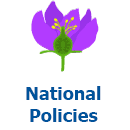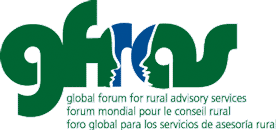 Every country has developed, formulated, and decreed national policies related to rural advisory services. Find some examples here. If you are looking for a national policy from a specific country, please use the search function, selecting the category “National policies” and the tag for the country.
Every country has developed, formulated, and decreed national policies related to rural advisory services. Find some examples here. If you are looking for a national policy from a specific country, please use the search function, selecting the category “National policies” and the tag for the country.

Recommendations (20)
Synthesis of Guiding Principles on Agriculture Programming for Nutrition
Written by Ingrid OliveiraSince the food crisis in 2008, the L’Aquila commitments to agriculture - as well as increased investments in agriculture from multilateral development institutions and foundations - have led to increased funding and human resources for agricultural development, and in particular that focused on smallholder and women farmers. At the same time, the Scaling Up Nutrition Framework for Action (2010) and Road Map (2011) have also placed an emphasis on the need for urgent investment to reduce malnutrition, and the United Nations Committee on World Food Security (CFS) is developing a Global Strategic Framework for Food Security and Nutrition (2012). National governments and operational staff have also increased their requests for assistance and guidance from the international development partners on what to do to improve nutrition impact from agriculture. For example, since the inclusion of nutrition as Pillar 3 in the CAADP, African nations are seeking improved knowledge and capacity in this area.
Improving Dietary Diversity to Enhance Women’s and Children’s Nutritional Status in Guatemala’s Western Highlands
Written by Ingrid OliveiraNearly one out of every two children under 5 years of age in Guatemala is stunted. In the Western Highlands, the situation is far worse, with 7 out of every 10 children stunted. Stunting causes children to be shorter than healthy children of the same age. Stunting is a result of chronic malnutrition caused by inadequate quantity and variety of nutrient-rich foods and/or by repeated illnesses, and can lead to adverse health and physical and cognitive development. Stunting in young children increases the risk of: mortality from infections, impaired cognitive ability, late school enrollment, poor school performance, dropping out of school, lower future adult labor productivity, and chronic diseases in adulthood. Preventing stunting through key interventions during the critical 1,000 days from pregnancy through the first 2 years of life is important because it can become increasingly difficult to reverse stunting’s negative consequences after this period.
USAID/ENGINE’s Dietary Diversity and “Farm Wash” SBCC Kit for Agriculture Extension Workers
Written by Ingrid OliveiraDURATION: 5 year integrated nutrition Feed the Future program, funded by USAID (2011-2016), working through multi-sector interventions
Agriculture and livelihoods, nutrition-specific and nutrition-sensitive programming, policy, training for frontliners, and advanced degree programs
PARTNERS:
- Led by Save The Children
- Partners include Land o’Lakes, Tufts University, JHPIEGO, The Manoff Group, Valid International, and local NGOs through sub-grants
LOCATION: 116 woredas (zones) in the Amhara, Oromia, SNNP, Tigray, amd Somali regions of Ethiopia
TARGETED BENEFICARIES:
- 3.1 million under five children
- half a million pregnant and lactating women
- 3.2 million women of reproductive age
Incorporating Nutrition in Farmer Field Schools
Written by Ingrid OliveiraIn many developing countries, food insecurity combined with a high incidence of infections continues to affect detrimentally the nutrition and health status of poor households. Wasting and stunting are important indicators of undernutrition. Wasting reflects acute food shortages and health problems, and stunting reveals the longer-term presence of nutrition problems. The signs and symptoms of specific micronutrient deficiencies are much less commonly known or recognized by local people and therefore not acted upon as frequently. However, specific micronutrient deficiencies frequently go hand-in-hand with general undernutrition.
Best Practice Tips on Measurement Tools for Gender Equity and Nutrition Impact
Written by Ingrid OliveiraAn important first step in strengthening gender equity and nutrition outcomes involves having reliable methods of measurement of current conditions (Ballard et al. 2011). Measurement tools and indicators have been developed and validated for measuring nutrition outcomes (FANTA 2008; FAO and FHI 360 2016) and gender equity (Malapit et al. 2014; Alkire et al. 2013) at international level. Measurement helps to hold implementers accountable for the actions they take towards improving the status of gender equity and/or nutrition outcomes in their target areas.
Malnutrition continues to be a major development challenge in the South Asia Region. Given its size, India hosts the majority of the malnourished. Around 300 million people in India do not have access to a food supply that sufficiently meets their basic energy needs (World Bank 2012. Nutrition at A Glance: India. Washington, DC: World Bank Group). Despite recent economic growth, poverty remains high, and malnutrition is now manifest in all its forms with overweight and obesity increasing alongside persistent undernutrition and micronutrient deficiencies. The progress made between 1970 and 2010 in reducing malnutrition was largely due to improving access to safe water, female education, and female empowerment, the latter 2 especially key in South Asia. The factor that made the least progress between 1995 and 2010 is increasing quantity and quality of food, clearly a responsibility of agriculture (L. Smith and L. Haddad 2014, “Reducing Child Undernutrition: Past Drivers and Priorities for the Post-MDG Era.” IDS Working Paper 441).

